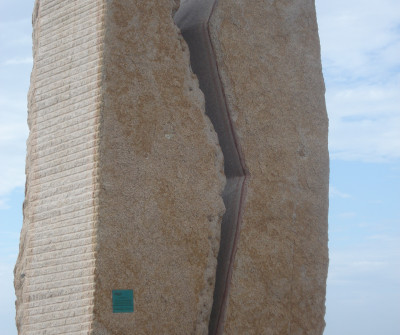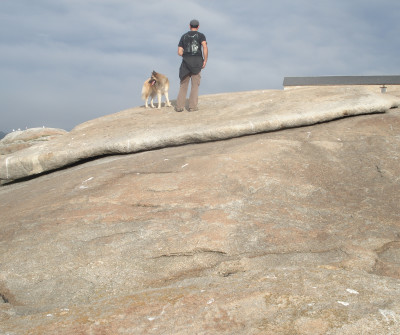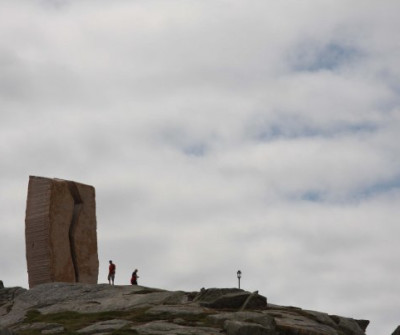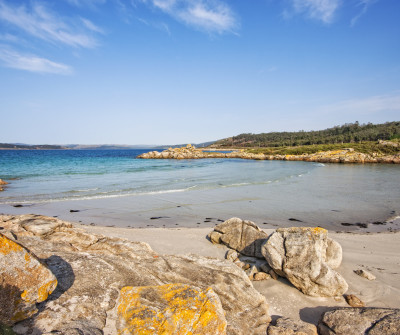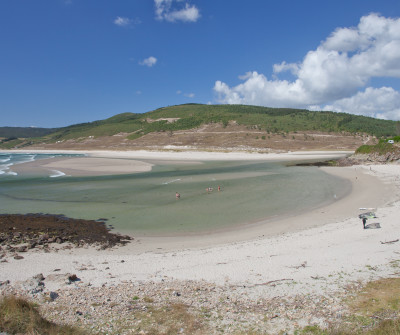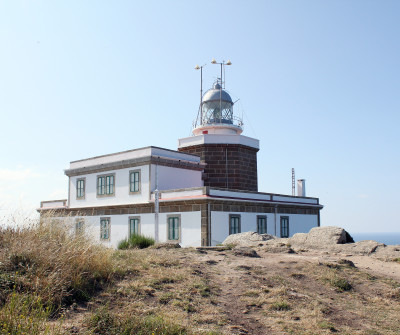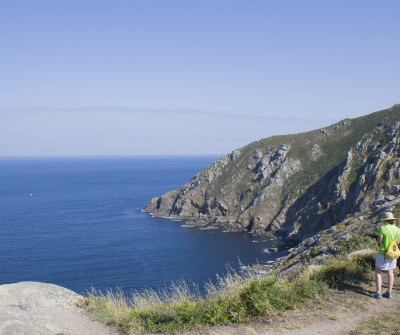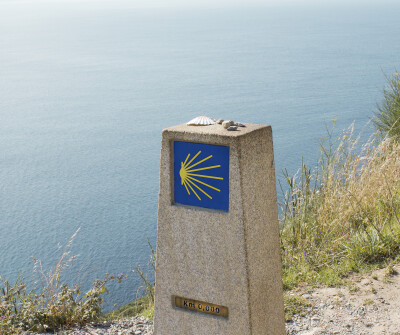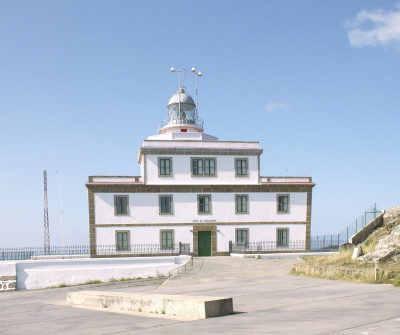After reaching Muxía, pilgrims can extend their Way to Fisterra and enjoy the ancient 'Finis Terrae' by travelling 30 kilometres, which we split into two stages:
READ MORE
1. Muxía - Lires (17 Km)
The Virxe da Barca Sanctuary is our starting
point. After visiting the church and enjoying the famous 'Pedras Santas', we
head in the direction of the town of Muxía bordering Monte Corpiño. We leave
Muxia through the streets of Campo das Pinas, Os Matos and Enfesto to skirt the
beach of Lourido. After passing through the village of Xurarantes, we have to
make a stop at the Facho de Lourido, a vantage point where bonfires were lit to
warn ships of the dangers of this coast. Our route continues through Morquintián,
Guisamande and Freixe to later cross the Castro River and enter the parish of Lires,
in the local authority of Cee.
2. Lires – Fisterra (14 km)
The second stage of our Way to Fisterra starts
in Lires, a beautiful enclave where the popular Praia do Rostro stands out. The
beauty of the route is undeniable, with the omnipresent sea among villages,
forests and crops. After passing the Praia do Rostro, we enter the Duio valley,
whose temple refers to the disappeared Roman city Dugium that appears in the
Codex Calixtinus. Our destination awaits us between tracks and lush forests. It
only takes one last effort to reach the mythical lighthouse, with Km 0 of the
Camino de Santiago and the Atlantic Ocean in all its splendour.
Tips from our postmen and women
What to see and do in Lires?

"The most interesting thing in Lires is its beautiful beach. Although, there are many hives and the tourist has the opportunity to buy home-made honey".
What to do see and do in Muxia?

"You cannot leave Fisterra without seeing the sunset from the lighthouse or from the 'Mar de Fora'. Either without visiting the fish market, which is the first touristic fish market in Galicia".


 Filter
Filter